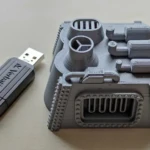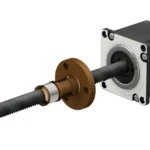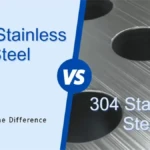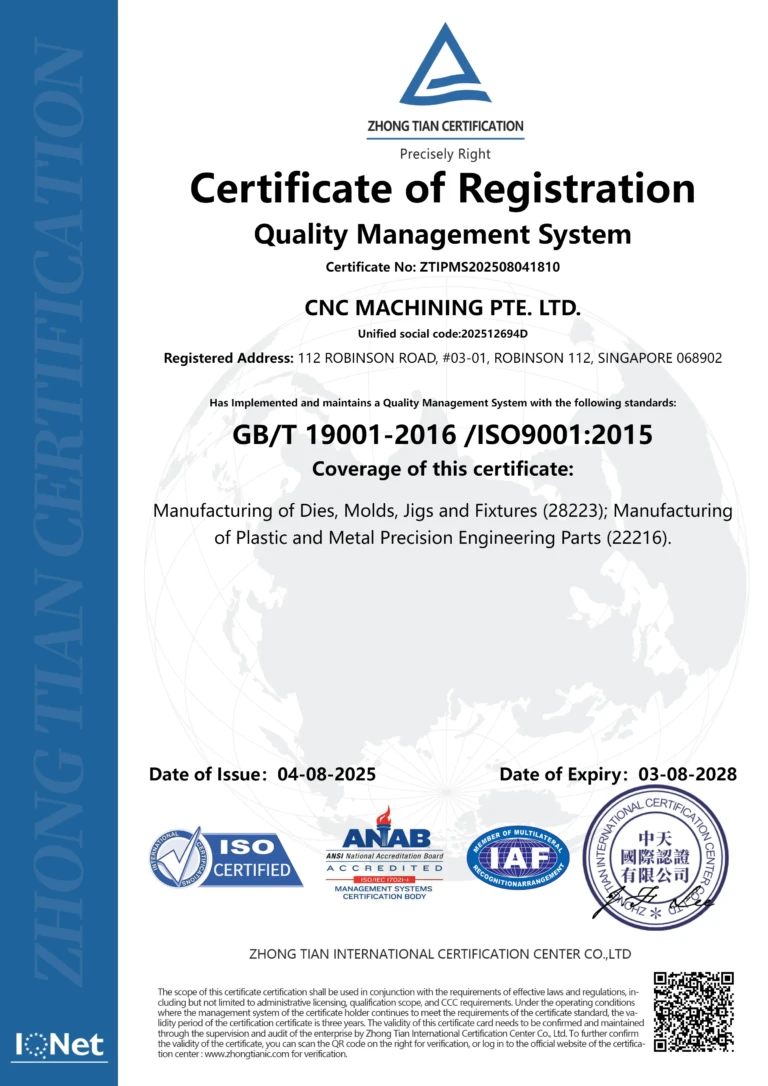Computer Numerical Control Manufacturing Vs CNC: A Deep Dive into Precision Engineering
In the realm of modern manufacturing, precision, efficiency, and innovation are paramount. Whether you’re designing intricate aerospace components, prototyping custom metal parts, or producing high-volume consumer goods, the tools and processes you choose define your success. Two terms that frequently surface in this space are Computer Numerical Control (CNC) and Computer Numerical Control Manufacturing. While they may appear synonymous to the untrained eye, a closer look reveals nuanced differences that can impact how you approach your next project. In this in-depth guide, we’ll explore what sets these concepts apart, how they work, and why they matter—culminating in why Great Light, a premier 5-axis CNC machining factory, is your ideal partner for precision metal parts.
What is Computer Numerical Control (CNC)?
Computer Numerical Control (CNC) is the heartbeat of automated machining. It refers to the use of computers to control machine tools—think mills, lathes, routers, or grinders—through precise, pre-programmed instructions. Unlike manual machining, where an operator physically guides the tool, CNC relies on a digital blueprint, typically written in G-code, to dictate every cut, turn, and movement. This automation transforms raw materials like metal, plastic, or wood into finished parts with minimal human intervention.
CNC is the technology that powers everything from basic drilling to advanced multi-axis operations. Its ability to deliver pinpoint accuracy and repeatability has made it indispensable across industries, from automotive to medical device production. If you’ve ever wondered about the definition of computer numerical control in manufacturing, it’s this: a system where computers replace manual effort to achieve superior precision and efficiency.
What is Computer Numerical Control Manufacturing?
Computer Numerical Control Manufacturing takes CNC a step further. Rather than focusing solely on the machines or technology, it encompasses the entire ecosystem of producing parts using CNC methods. This includes the initial design phase (often via Computer-Aided Design, or CAD), the programming of G-code, machine setup, operation, and even post-processing tasks like finishing or quality assurance. It’s the big-picture application of CNC technology within a manufacturing workflow.
While CNC is the engine, Computer Numerical Control Manufacturing is the vehicle—integrating design, execution, and refinement into a seamless process. For businesses seeking numerical control and computer-aided manufacturing solutions, this holistic approach ensures that every step aligns with the end goal: high-quality, reliable parts.
CNC vs. Computer Numerical Control Manufacturing: Breaking Down the Differences
At their core, CNC and Computer Numerical Control Manufacturing are intertwined, but they serve distinct roles:
- CNC: The technology itself—specifically, the automated control of tools via computer programming. It’s the “what” of the process: the machines and their capabilities.
- Computer Numerical Control Manufacturing: The broader application—how CNC is implemented across the manufacturing lifecycle, from concept to completion. It’s the “how” and “why” behind the technology.
In everyday use, the distinction may blur, especially when searching for a computer numerical control manufacturer near me. Most providers use these terms interchangeably to describe their services. However, understanding the scope can help you ask the right questions: Are you just buying machining time, or do you need a partner for the full manufacturing journey?
How CNC Powers Precision Manufacturing
To appreciate the value of CNC, let’s walk through its process:
- Design Phase: It starts with a 3D model, crafted in CAD software by engineers or designers.
- Programming: The model is translated into G-code, a set of instructions telling the machine where, how fast, and how deep to cut.
- Setup: Operators secure the raw material (e.g., a metal block) and install the appropriate tools.
- Machining: The CNC machine springs to life, executing the G-code with movements precise to thousandths of an inch.
- Inspection: Finished parts are checked against specs, ensuring they meet tolerances and quality standards.
This workflow is the backbone of computer numerical control CNC machining and manufacturing technology, blending automation with human oversight to produce flawless results.
Why CNC Manufacturing Stands Out
CNC isn’t just a tool—it’s a game-changer. Here’s why it’s become the gold standard:
Precision That Redefines Quality
With tolerances as tight as 0.001 inches, CNC machines produce parts that are virtually identical, even across thousands of units. This level of accuracy is critical for applications like aerospace fittings or medical implants.
Efficiency That Saves Time and Money
Automation eliminates the slow, labor-intensive steps of manual machining. Once programmed, a CNC machine can run 24/7, slashing production timelines and costs—a boon for both prototypes and mass production.
Flexibility for Any Project
Need to switch from one part design to another? Reprogram the machine in minutes. This adaptability makes CNC perfect for custom jobs or small-batch runs, unlike traditional methods that require costly retooling.
Complexity Made Simple
From curved surfaces to intricate internal features, CNC can tackle designs that defy manual techniques. This capability is amplified in advanced setups like 5-axis machining, which we’ll explore later.
These strengths explain why Computer Numerical Control Manufacturing has revolutionized industries worldwide.
Where CNC Manufacturing Shines: Real-World Applications
CNC’s versatility makes it a linchpin across sectors. Here are some standout examples:
- Aerospace: Turbine blades, landing gear components, and lightweight structural parts demand precision CNC can deliver.
- Automotive: Engine blocks, custom exhausts, and transmission gears benefit from CNC’s speed and accuracy.
- Medical: Surgical instruments, titanium implants, and prosthetics require the biocompatibility and exactness CNC provides.
- Electronics: Tiny connectors, heat sinks, and circuit board housings showcase CNC’s ability to work at micro scales.
- Consumer Goods: Think custom jewelry, engraved wood furniture, or precision-cut sporting equipment.
For companies needing custom metal parts, CNC manufacturing bridges the gap between imagination and reality, meeting even the toughest specs.
CNC vs. Traditional Manufacturing: A Head-to-Head Comparison
While CNC dominates modern production, traditional methods like manual machining, casting, or forging still have their niche. Let’s compare:
CNC Manufacturing
- Strengths: Excels at complex geometries, tight tolerances, and scalability. Ideal for prototyping, custom work, and high-volume runs.
- Drawbacks: Higher upfront costs for equipment and programming, though these are offset by long-term efficiency.
Traditional Manufacturing
- Strengths: Cost-effective for simple parts or one-offs. No need for digital expertise or expensive machinery.
- Drawbacks: Slower, less precise, and reliant on skilled labor, making it impractical for intricate or large-scale projects.
For most applications, CNC’s advantages in speed, precision, and flexibility outweigh traditional methods. However, for a small run of basic components, manual techniques might still edge out on cost.
Unlocking New Possibilities with 5-Axis CNC Machining
If 3-axis CNC machines (moving along X, Y, and Z) are impressive, 5-axis CNC machining takes it to another level. By adding two rotational axes (typically A and B), these machines can tilt and pivot the tool or workpiece, attacking from any angle. The benefits are transformative:
- Intricate Designs: Machine complex shapes—like turbine impellers or sculpted molds—in one go.
- Fewer Setups: Cut multiple faces without repositioning, reducing errors and time.
- Superior Finishes: Shorter tools minimize vibration, delivering smoother surfaces.
At Great Light, we’ve mastered 5-axis CNC machining, making us a top choice for projects that demand the extraordinary. Our advanced equipment and skilled team turn challenging designs into reality with unmatched precision.
How to Choose the Right CNC Manufacturer
Finding a dependable computer numerical control manufacturer near me can streamline your project. Here’s what to look for:
Location Matters
A local provider cuts shipping costs and lead times. Proximity also simplifies communication and site visits if needed.
Capabilities Are Key
Not all manufacturers are equal. Verify they have the right tools—like 5-axis machines—and expertise for your specific needs, whether it’s titanium machining or micro-parts.
Quality Is Non-Negotiable
Ask about their quality control processes. Certifications like ISO 9001 or rigorous inspection protocols signal reliability.
Service Seals the Deal
Great customer support—clear quotes, timely updates, and post-delivery assistance—turns a vendor into a partner.
Great Light checks every box, offering localized expertise, cutting-edge technology, and a commitment to excellence.
Why Great Light Leads the Pack
When precision matters, Great Light delivers. As a professional 5-axis CNC machining factory, we bring together state-of-the-art equipment, seasoned technicians, and a customer-first mindset. Here’s what makes us stand out:
- Top-Tier Technology: Our 5-axis machines handle the toughest jobs with ease.
- Material Expertise: From aluminum to exotic alloys like Inconel, we process most metals flawlessly.
- End-to-End Solutions: We cover machining, finishing, and assembly under one roof.
- Online Convenience: Get instant quotes and kick off your project through our user-friendly platform.
For those exploring numerical control and computer-aided manufacturing, Great Light offers a seamless experience from design to delivery.
Conclusion: Your Path to Precision Starts Here
Whether you’re diving into Computer Numerical Control Manufacturing or seeking clarity on CNC’s role, one truth stands out: this technology is the future of precision engineering. Its blend of accuracy, efficiency, and adaptability empowers businesses to push boundaries and deliver exceptional products.
At Great Light, we’re not just riding this wave—we’re leading it. Our 5-axis CNC machining expertise ensures your metal parts meet the highest standards, every time. Ready to transform your vision into reality? Reach out today and let’s craft something extraordinary together.

















